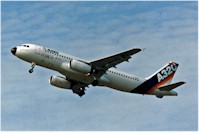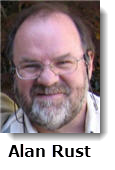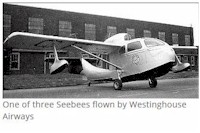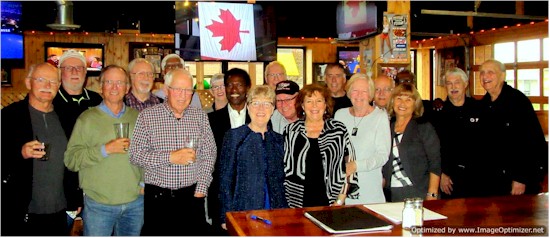 Airbus A320 Family – 2nd best (for now)
Airbus A320 Family – 2nd best (for now)
I last wrote about the A320 fleet in NetLetter #1391 as the fleet is nearing 30 years of service in the Air Canada fleet.
I recently came across an article at www.businessinsider.com about how the A320 is solidly in 2nd place, behind the Boeing 737 family, of all time airliner sales.
As of the end of August 2018, the B-737 leads in sales 14,956 to 14,281 for the A320. However, considering that the B-737 entered production 20 years (1967 – 1987) before the A320, the originally controversial aircraft is arguably the fastest selling and most successful passenger aircraft ever built.
I was curious about the history of the A320 prototype aircraft (MSN 001) and was quite surprised to learn that it remained a testbed aircraft for its entire career.
F-WWAI was originally registered in February 1987 and had been re-registered twice, as F-WWFT and later F-WWBA when it last used for winglet testing before being withdrawn from service in July 2016 and re-painted and preserved at the Aeroscopia Museum in Toulouse under its original registration, FWWAI.
Additional references:
World Airline News
Airliners.net
Planetspotters.net
Planelogger.net
 Launching Runway for Crop Dusting
Launching Runway for Crop Dusting
Aerial topdressing
Aerial topdressing is the aerial application of fertilizers over farmland using agricultural aircraft. It was developed in New Zealand in the 1940s and rapidly adopted elsewhere in the 1950s. Although this is quite common in areas where they do crop dusting and fertilizing, most people never see this.
Aerowork is a company in New Zealand that provides this service and the video below shows how they do this, making many runs per day. I found it amazing that they use the uphill part of the runway to slow down and the opposite to "launch" themselves back into the air. This aircraft was applying "lime" to the crops.
The aircraft is a Pacific Aerospace, Model: Cresco 08-600 The PAC Cresco is a turboprop-powered derivative of the FU-24 PAC Fletcher aerial topdressing aircraft, manufactured by the Pacific Aerospace Corporation in Hamilton, New Zealand.
|
In NetLetter #1398, in the CPAir section we had an article regarding Canadian Pacific Airlines, (Airlines 1 word), with several photos of early aircraft and the hangars show Canadian Pacific Air Lines, (Air Lines 2 words). Ken Pickford, who proofreads the NetLetter before we send it to our subscribers, stated that the name of Canadian Pacific Airlines in our original draft of the article was incorrect and should be Canadian Pacific Air Lines, "Air Lines" (2 words). We questioned this as the tickets we have also shows Canadian Pacific Airlines, (Airlines 1 word). This was Ken's response - Re: Canadian Pacific Airlines vs. Air Lines, as mentioned the legal name was always 2 words, but the one-word format did appear off and on for marketing purposes. In the ticket small print somewhere inside there's likely a reference to it having been issued by Canadian Pacific Air Lines, Limited. When the CP Air name was adopted in 1968 that was also just a marketing name, never had any legal significance. (Note: All reference to Canadian Pacific Airlines in NetLetter nr 1398 was amended to read Canadian Pacific Air Lines. This is a similar confusion between Trans-Canada Airlines (incorrect) and Trans-Canada Air Lines (correct) - eds) |
|
Neil Burton has sent us the paper he has just finished about the use of a Seabee aircraft operated from Fulton Field Airport, Kamloops, by Kamloops Air Service, and pilot Harry Layton Bray and his fellow ex-servicemen. Harry Bray earned his air time on both prop-driven aircraft and the jet propelled type. A note I have says he retired from Pacific Western Airlines in June 1981. Also, part of this paper references ex Air Commodore Earl Leslie MacLeod’s MacLeod Aircraft Limited, of Vancouver, a dealer of the Republic Seabee. This lends an idea of who was operating the aircraft in B.C., during the late 1940 – early 1950 period. This being the 80th year of a licensed airport, in Kamloops, I’ve added short tidbits of the years 1927 to the 1938 licensing. Hope you and your readers enjoy the history, should you choose to read it. Cheers, Neil Burton, September 22, 2018. |
 SeaBee Amphibious Aircraft on Fulton Field (Kamloops, B.C.) SeaBee Amphibious Aircraft on Fulton Field (Kamloops, B.C.) |
|
In 1946 two sons of the American industrialist George Westinghouse established Westinghouse Airways headquarters in Victoria. They flew their Luscombe and three Seabee pusher flying boats out of Canadian Pacific and BC Airlines’ base in View Royal. The service was sold to BC Airlines in 1954. (Source: www.victoriaharbourhistory.com) |
A United Airlines Boeing 787 flew from San Francisco (SFO) to Zurich on September 14-15 powered by a blend of biojet fuel derived from carinata, an oilseed crop that can be grown in rotation with food crops.
(Source: ATW Online)



